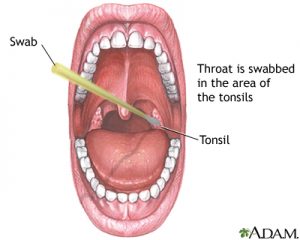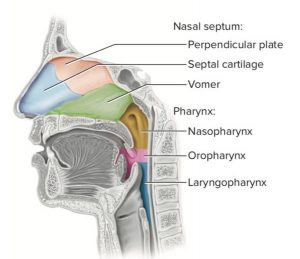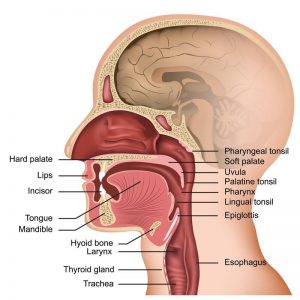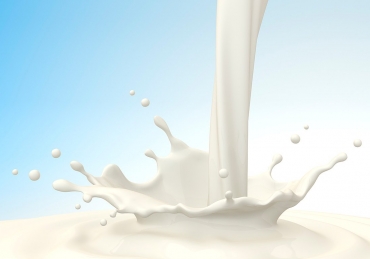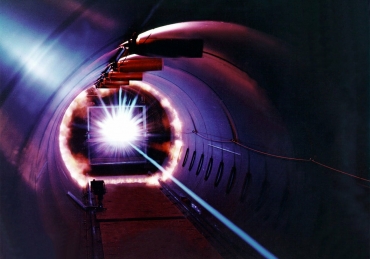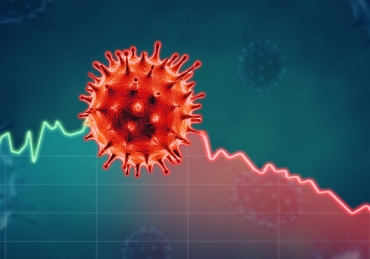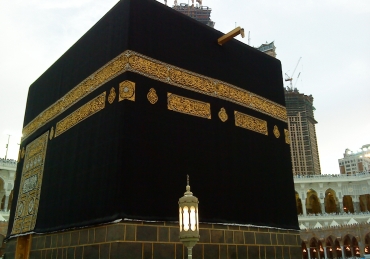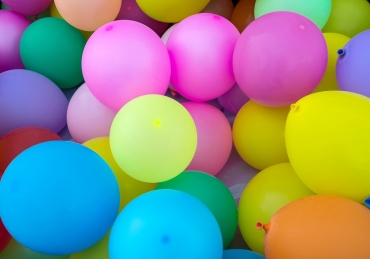Does Covid-19 test break the fast?
Question
Does the Covid-19 swab test break the fast? The long cotton bud stick is inserted into the throat via the mouth where the tonsils protrude to.
It is also placed inside the nostrils although one does not have to push very far in the nostrils. Generally, in the UK a dry swab is used and this can be administered at home by individuals themselves. However, the World Health Organisation recommends a moist swab. A moist swab is not dripping and it is unlikely any fluid would come out.
(For other Q&As & articles regarding Coronavirus, click here)
بسم الله الرحمن الرحیم
Answer
Dry Swab Test
The dry swab test does not nullify the fast. This is because it is dry and it is not entering the ḥalq (throat), and even if it was entering the ḥalq, it would not nullify the fast because the stick is being held and removed immediately, it would not remain in the ḥalq independently.
Moist Swab Test
The moist swab test does not nullify the fast because the moisture does not reach the ḥalq (throat) when the swab is taken from the mouth and the nose.
In relation to the mouth swab, our understanding, after consulting with Muslim doctors, is that the stick end of the swab does not touch the ḥalq (throat) during the mouth swab, neither does the moisture drip. Nevertheless, if a person is certain or has ẓann gālib (reasonable surety/preponderance of opinion) that the moisture did drip anywhere in the mouth and was swallowed, then qaḍāʾ will be necessary without any additional penalty. If, however, it was spat out and not swallowed, the fast will be valid.
Similarly, the nose swab does not nullify the fast because the moisture does not reach the ḥalq. As mentioned in the question, the stick end does not reach the end of the nasal cavity. If, however, it drips and reaches the ḥalq, the fast will break necessitating qaḍāʾ.
Given that the area from which the swab is taken is very close to the ḥalq, if it is possible to use the moist swab test after sunset or use the dry swab test, this should be considered to avoid any doubt. However, if this is not possible, the moist swab test can be used.
Explanation
Consider the following two diagrams:
Anatomically, the portion behind the nose and mouth is called Pharynx. This has three portions, the orange Nasopharynx, the pink Oropharynx and the blue Laryngopharynx as coloured in the first diagram. The Swab done via the mouth is taken from the tonsils in the Oropharynx.
The key question is whether the Oropharynx is part of the ḥalq (throat) or not. It is worth noting at the outset that there is no agreed definition of ḥalq and various views exist.
Generally, from a linguistic, medical and tajwīd perspective, this is regarded part of the ḥalq. The makhraj (articulation point) of the letters غ and خ is the area of the Soft Palate. This area is commonly referred to as the upper throat. The makhraj for letters ح and ع is the level of the Epiglottis. The Epiglottis is a leaf-shaped flap in the throat that prevents food from entering the windpipe and the lungs. This area is commonly referred to as the mid-throat. In the first diagram, this is the top of the blue area (Laryngopharynx). The makhraj for ء and ه is the Larynx. This is commonly referred to as the lower or deep throat.
However, it is our understanding from a fiqh perspective that the area of the tonsils in the Oropharynx from where the swab is taken is not part of the ḥalq. In reaching this conclusion, the following has been considered:
- When a person does maḍmaḍah (gargling) during ablution, the water reaches the tonsils and the Oropharynx. This has been confirmed by several Muslim doctors. This indicates that according to the Ḥanafīs and the majority of scholars who permit gargling during ablution for a fasting person, the Oropharynx is not part of the ḥalq.
- The dominant and authoritative Shāfiʿī position is that the Epiglottis is the starting point of the ḥalq and the jawf (the cavity of consequence). Thus, in the first diagram, the area shaded in blue (Laryngopharynx) where the passage starts to narrow is the ḥalq and not above. The Shāfiʿī jurist ʿAllāmah Ramlī (d. 1004/1596) explains that the definition of ḥalq according to jurists is more limited than the definition of the linguists. Therefore, based on this, the Oropharynx is not part of the ḥalq.
- We have not come across the definition of the ḥalq in the Ḥanafī school or the other schools. Some fiqh books cite the three areas of ḥalq for the pronunciation of letters based on the Tajwīd rules mentioned above. However, the Mālikī jurist ʿAllāmah Ḥaṭṭāb (d. 954/1547) quotes ʿAllāmah Burzulī (d. 844/1438) who said, “He who has a nosebleed and holds his nose, and the blood comes out from his mouth and does not return to his ḥalq, then there is nothing upon him”. ʿAllāmah Ḥaṭṭāb explains that this (from a Mālikī perspective) is because the blood does not pass the jawf (the cavity of consequence), which is referring to the ḥalq. After consulting with Muslim doctors, it is clear that the for the blood to reach the mouth, it has to pass the makhraj of غ and خ (the Soft Palate area) as well as the Oropharynx. The pink line from the nose to the mouth in the second diagram illustrates this. This suggests that according to ʿAllāmah Ḥaṭṭāb and possibly ʿAllāmah Burzulī, the Oropharynx is not part of the ḥalq.
- The contemporary scholars, Dr ʿAbdul ʿAlī al-Masʾūl and Dr ʿAbdul al-Raḥmān al-Ṣayyig, have outlined various definitions of ḥalq in their respective works. They present the contemporary medical definition of ḥalq, as well as earlier definitions from Muslim scientists and linguists. This affirms that a consensus has not existed on the definition of ḥalq. They further suggest that according to the muḥaddithūn, the ḥalq is an empty space between the Larynx and the Epiglottis, and that only two sounds emerge from this area: ح and ع. Whilst it is not certain that the Arabic term ‘Lahāt’ refers to Epiglottis, it is certain that the makhraj of غ and خ (the Soft Palate area) and the makhraj of ء and ه (the Larynx) is not included in this definition of ḥalq attributed to the muḥaddithūn. It therefore appears that the Oropharynx is not part of the ḥalq according to this definition.
In conclusion, it is our understanding that the tonsils in the Oropharynx from which the swab is taken is not part of the ḥalq. Therefore, the fast will not break unless the moisture drips and is swallowed. Nevertheless, if it is possible to use the moist swab test after sunset or use the dry swab test, this should be considered to avoid any doubt. However, medical advice should be sought, as it is suggested that the dry swab test is not as effective as the moist swab test.
The conclusion reached in this Fatwa is based on the information we have received and in light of the UK Government’s guidance. If anyone has any alternative research, please share with us.
قال النبي صلى الله عليه وسلم: الحلال بين، والحرام بين، وبينهما مشبهات لا يعلمها كثير من الناس، فمن اتقى المشبهات استبرأ لدينه وعرضه، ومن وقع في الشبهات: كراع يرعى حول الحمى، يوشك أن يواقعه، الحديث، رواه البخاري (٥٢). وقال النبي صلى الله عليه وسلم: دع ما يريبك إلى ما لا يريبك، رواه النسائي (٥٧١١) والترمذي (٢٥١٨) وصححه، وعلقه البخاري (٢٠٥٢) بصيغة الجزم۔
وقال في الأصل (٢/١٦٨): قلت: أرأيت الرجل يتمضمض في شهر رمضان، فيسبقه الماء، فيدخل الماء حلقه، وهو ناس لصومه؟ قال: يمضي في صومه ذلك ولا يفطر، ولا قضاء عليه. قلت: فإن كان ذاكرا لصومه؟ قال: عليه القضاء، ولا كفارة عليه. قال: أخبرنا محمد عن أبي حنيفة عن حماد عن إبراهيم بذلك. قلت: فلم ألقيت عنه الكفارة؟ قال: لأنه لم يدخله جوفه على وجه الإفطار، فلذلك ألقيت عنه الكفارة. قلت: أرأيت الصائم يذوق الشيء بلسانه ولا يدخله حلقه؟ قال: لا يفطره ذلك، وصومه تام. قلت: أفتكره له أن يعرض نفسه لشيء من هذا؟ قال: نعم۔
وقال السرخسي في المبسوط (٣/٦٨): وأكثر مشايخنا رضي الله عنهم أن العبرة بالوصول حتى إذا علم أن الدواء اليابس وصل إلى جوفه فسد صومه، وإن علم أن الرطب لم يصل إلى جوفه لا يفسد صومه عنده. وقال (٣/٩٣): وإذا ذاق الصائم بلسانه شيئا، ولم يدخل حلقه لم يفطر، لأن الفطر بوصول شيء إلى جوفه، ولم يوجد والفم في حكم الظاهر، ألا ترى أن الصائم يتمضمض فلا يضره ذلك، ويكره له أن يعرض نفسه لشيء من هذا، لأنه لا يأمن أن يدخل حلقه بعد ما أدخله فمه، فيحوم حول الحمى، قال صلى الله عليه وسلم: فمن رتع حول الحمى يوشك أن يقع فيه. وقال (٣/١٤٢): ألا ترى أن الصائم إذا تمضمض فإنه يبقى في فمه بلة ثم تدخل بعد ذلك حلقه مع ريقه وأحد لا يقول: بأن ذلك يفطره، انتهى.۔
وقال السمرقندي في التحفة (١/٣٥٣): وكذلك لو بقي بلل بعد المضمضة وابتلعه مع البزاق أو ابتلع البزاق الذي اجتمع في فيه لا يفسد صومه لما قلنا، انتهى۔
وقال الكاساني في البدائع (٢/٩٣): وكذا قالوا فيمن ابتلع لحما مربوطا على خيط ثم انتزعه من ساعته، إنه لا يفسد وإن تركه فسد، وكذا روي عن محمد في الصائم إذا أدخل خشبة في المقعدة، إنه لا يفسد صومه إلا إذا غاب طرف الخشبة، وهذا يدل على أن استقرار الداخل في الجوف شرط فساد الصوم، انتهى۔
وقال ابن نجيم في البحر الرائق (٢/٣٠٠): وفي الظهيرية: ولو أدخل خشبة أو نحوها وطرفا منها بيده لم يفسد صومه، قال في البدائع: وهذا يدل على أن استقرار الداخل في الجوف شرط لفساد الصوم، وكذا لو أدخل أصبعه في استه أو أدخلت المرأة في فرجها، هو المختار إلا إذا كانت الأصبع مبتلة بالماء أو الدهن، فحينئذ يفسد لوصول الماء أو الدهن، انتهى۔
وقال الحصكفي في الدر المختار (٢/٣٩٦): (أو بقي بلل في فيه بعد المضمضة وابتلعه مع الريق) كطعم أدوية ومص إهليلج بخلاف نحو سكر. وقال: (أو خرج الدم من بين أسنانه ودخل حلقه) يعني ولم يصل إلى جوفه. وقال (٢/٤٠٢): (أو احتقن أو استعط) في أنفه شيئا (أو أقطر في أذنه دهنا أو داوى جائفة أو آمة) فوصل الدواء حقيقة إلى جوفه ودماغه، انتهى۔
وقال ابن عابدين في رد المحتار (١/١٤٩): والحاصل أن الصوم يبطل بالدخول، والوضوء بالخروج، فإذا أدخل عودا جافا ولم يغيبه لا يفسد الصوم لأنه ليس بداخل من كل وجه ومثله الأصبع، وإن غيب العود فسد لتحقق الدخول، وكذا لو كان هو أو الأصبع مبتلا لاستقرار البلة في الجوف، انتهى۔
وقال الحصكفي في الدر المختار (٢/٤٠٢): (أو احتقن أو استعط) في أنفه شيئا (أو أقطر في أذنه دهنا أو داوى جائفة أو آمة) فوصل الدواء حقيقة إلى جوفه ودماغه، انتهى. قال ابن عابدين: ولم يقيدوا الاحتقان والاستعاط والإقطار بالوصول إلى الجوف لظهوره فيها وإلا فلا بد منه، حتى لو بقي السعوط في الأنف ولم يصل إلى الرأس لا يفطر، ويمكن أن يكون الدواء راجعا إلى الكل تأمل، انتهى۔
وقال النووي في شرح المهذب (٦/٣١٩): قال الغزالي: مخرج الحاء المهملة من الباطن، والخاء المعجمة من الظاهر، ووافقه الرافعي فقال: هذا ظاهر، لأن المهملة تخرج من الحلق، والحلق باطن، والمعجمة تخرج مما قبل الغلصمة، قال الرافعي: لكن يشبه أن يكون قدر مما بعد مخرج المهملة من الظاهر أيضا، هذا كلام الرافعي، والصحيح أن المهملة أيضا من الظاهر، وعجب كونه ضبط بالمهملة التي هي من وسط الحلق ولم يضبط بالهاء أو الهمزة، فإنهما من أقصى الحلق، وأما الخاء المعجمة فمن أدنى الحلق، وكل هذا مشهور لأهل العربية، انتهى۔
وقال زكريا الأنصاري في أسنى المطالب في شرح روض الطالب (١/٤١٥): (وحدد الظاهر بمخرج الحاء المهملة) كالمعجمة المفهومة بالأولى، وقال الرافعي نقلا عن الغزالي: مخرجها من الباطن بخلاف مخرج المعجمة، فالحلق في قولهم الواصل إلى الحلق مفطر محمول على ما ضبطوا به الباطن منه (ثم داخل الفم والأنف إلى منتهى الغلصمة) وهي بغين معجمة مفتوحة ولام ساكنة وصاد مهملة الموضع الناتئ في الحلق (و) منتهى (الخيشوم ظاهر)، انتهى. قال الرملي الكبير في حاشيته: قوله (مخرجها من الباطن) المراد الباطن مخرج الهاء والهمزة، انتهى۔
وقال زكريا الأنصاري في غرر البهية (٢/٢١٣): ثم الأقرب كما قال السبكي أنها من الباطن كما قاله الرافعي، بل قد يقال: ينبغي أن تكون حروف الحلق كلها من الباطن لما صرحوا به من أن الواصل إلى الحلق يفطر، وكل منها مخرجه من الحلق، كما هو مشهور عند أئمة اللغة وغيرها، ويجاب بحمل الحلق في هذا الذي صرحوا به على ما ضبطوا به الباطن منه، انتهى۔
وقال ابن حجر المكي في تحفة المحتاج (٣/٤٠٠): وذكر الخلاف في الحد أهو المعجمة وعليه الرافعي وغيره، أو المهملة وهو المعتمد، كما تقرر، فيدخل كل ما قبله، ومنه المعجمة، انتهى۔
وقال الرملي في نهاية المحتاج (٣/١٦٥): ومعنى الحلق عند الفقهاء أخص منه عند أئمة العربية، إذ المعجمة والمهملة من حروف الحلق عندهم (أي أئمة العربية) وإن كان مخرج المعجمة أدنى من مخرج المهملة، ثم داخل الفم والأنف إلى منتهى الغلصمة والخيشوم له حكم الظاهر في الإفطار باستخراج القيء إليه وابتلاع النخامة منه، وعدمه بدخول شيء فيه وإن أمسكه، انتهى بزيادة ما بين القوسين من حاشية الشرواني على تحفة المحتاج (٣/٤٠٠)۔
وقال العدوي في حاشية شرح مختصر خليل للخرشي (٢/٢٤٩): قوله (أو حلق) إلخ، ظاهره شموله لمخارجه كلها أدناها وأوسطها، لم نر في ذلك تفصيلا، انتهى. لكن قال الحطاب في مواهب الجليل (٣/٢٠٥، طبعة دار الرضوان): (أو حلق) مسألة: قال البرزلي: من رعف فأمسك أنفه فخرج الدم من فيه ولم يرجع إلى حلقه فلا شيء عليه. قلت: لأن منفذ الأنف إلى الفم دون الجوف، فهو ما لم يصل إلى الجوف لا شيء فيه، انتهى۔
وقال الزرقاني في شرح مختصر خليل (٢/٣٦٣): تنبيه: ظاهر قوله (أو حلق) شموله لمخارجه كلها أدناها وأوسطها وأعلاها الذي هو الهمزة والهاء، وللشافعية مخرج الحاء المهملة له حكم الباطن عند النووي والرافعي، ومخرج الخاء المعجمة من الظاهر عند النووي دون الرافعي، ولم أر لأصحابنا فيه نصا، قاله عج في كبيره، وقال ح [أي الحطاب] عن البرزلي: من رعف فأمسك أنفه فخرج الدم من فيه ولم يرجع إلى حلقه فلا شيء عليه. قلت [القائل هو الحطاب]: لأن منفذ الأنف إلى الفم دون الجوف، فهو ما لم يصل إلى الجوف لا شيء عليه، اهـ. قلت: مقتضى قوله ولم يرجع إلى حلقه فلا شيء عليه: أنه إن وصل لحلقه أفطر، وهو المناسب لما تقرر من وصول المائع للحلق مفطر، ومقتضى قوله آخرا فهو ما لم يصل إلى الجوف الخ أن وصوله للحلق لا يفطر، ولعل المعتمد كلامه الأول، انتهى مصححا من مواهب الجليل۔
وقال صاحب منح الجليل (٢/١٣٢) تبعا للخرشي (٢/٢٤٩) وغيره: والمذهب أن المائع الواصل للحلق مفطر ولو لم يجاوزه إن وصل من الفم بل (وإن) وصل له (من أنف وأذن وعين) نهارا، انتهى۔
وقال الأستاذ الدكتور عبد العلي المسؤول في معجم مصطلحات علم القراءات القرآنية وما يتعلق به (ص ٢٠٢): الحلق: هو الفراغ الواقع بين الحنجرة والفم، وهو المفهوم الحديث للحلق، بيد أن القدماء يجعلون الحلق يمتد من موضع الوترين الصوتيين إلى اللهاة، قال ابن سينا عن الحلق: إنه الفضاء الذي فيه مجريا النفس والغذاء، ومنه الزوائد التي هي اللهاة واللوزتان والغلصمة (انتهى كلام ابن سينا). ويقسمونه إلى أقصى الحلق ووسطه وأدناه، كل قسم يخرج منه صوتان: ء ه ع ح غ خ. أما المحدثون فالحلق عندهم هو الفراغ الواقع بين الحنجرة وأقصى الحنك، ويخرج منه صوتان فقط: العين والحاء، انتهى۔
وهذا الذي قاله الدكتور عبد العلي مأخوذ من المصطلح الصوتي في الدراسات العربية (ص ٢٧) كما ذكره في حاشيته، وهذا الكتاب هو للدكتور عبد العزيز الصيغ، قال فيه (ص ٦٠) أيضا: المحدثون لديهم للحلق صوتان فقط، وهما العين والحاء، وهذا يفيد أن منطقة الحلق هي ما بعد الحنجرة وما قبل اللهاة، وهي المنطقة التي يطلق عليها أيضا البلعوم، بينما الحلق عند القدماء يشمل الحنجرة والبلعوم ومؤخرة الحنك الرخو. وقال (ص ٦٦): ولما كانت منطقة أوسط الحلق عند عند القدماء هي منطقة الحلق عند المحدثين ومنطقة الحلق أيضا يطلق عليها البلعوم، فإن صوتي العين والحاء عند المحدثين يوصفان بأنهما حلقيان، كما يوصفان بأنهما بلعوميان، انتهى۔
Allah knows best
Yusuf Shabbir
1 Ramadan 1441 / 24 April 2020
Approved by: Mufti Shabbir Ahmad and Mufti Muhammad Tahir
This Fatwa was updated on 4 Ramadan 1441/ 27 April 2020 and supersedes our earlier Fatwa. We thank Qari Zakir Husayn, Dr Mawlana Riyad Kallingal, Qari Mufti Mouhammad Dodakia and Dr Shaykh Asmar Akram for their contribution and feedback.


